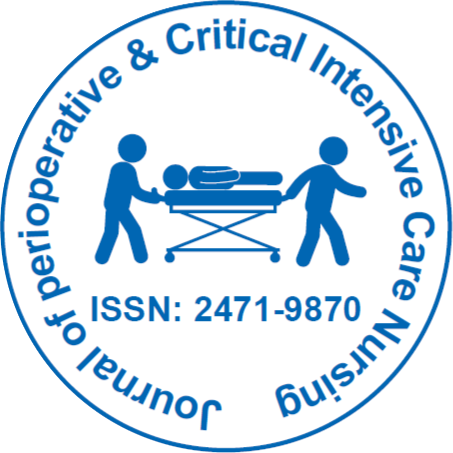
Journal of Perioperative & Critical Intensive Care Nursing
Open Access
ISSN: 2471-9870
+44-77-2385-9429

ISSN: 2471-9870
+44-77-2385-9429
Short Communication - (2021)Volume 7, Issue 4
One of the treatments for many life-threatening liver illnesses is liver transplantation. A growing number of liver transplant surgeries are now possible thanks to advancements in liver transplant surgery, anaesthesia, and perioperative care. The goal of this study is to look at some of the significant developments in perioperative care for liver transplant patients, such as pre-operative evaluation, intraoperative monitoring, and post-operative monitoring. Many life-threatening liver illnesses can still be treated by liver transplantation. In Denver, Colorado, the first human liver transplant was conducted in 1963. Between 1995 and 2011, around 350 liver transplants were conducted in India. Numerous advancements in perioperative management, such as expertise in surgical techniques, better pre-operative optimisation, intraoperative monitoring and management, changes in immunosuppression regime, and advances in post-operative management, have increased the number of procedures performed as well as the outcome. After a liver transplant, one-year survival has increased from 72 percent to 79 percent in 1998 to 85 percent to 90 percent in 2008. The ten-year survival rate has grown from 33% in 1998 to 53% in 2008 and 66% in 2010.
Liver Transplantation Pre-Operative Evaluation
In patients with chronic liver disease, prognostic indices for a 1-year survival without liver transplantation, such as Child-Turcotte-Pugh or Revised Model for end-stage liver disease (MELD) scores, assess the urgency for liver transplantation. The perioperative risks are actuated by a complete examination of the patient's comorbidities, both connected with and independent of liver failure. To avoid post-operative infectious issues, both donors and recipients must have pre-transplant infections disease screening (dental, ophthalmic, otorhinolaryngological, and urogenital). A psychological evaluation of the transplant patient will aid in identifying the unfavourable factors influencing the outcome and developing measures to counteract them. The number of centres doing liver transplants in India is currently restricted, although it is constantly expanding. The Indian Society of Organ Transplantation has established an electronic central database of organ transplants (including liver), similar to the United Network for Organ Sharing (UNOS) database in the United States, to collect information, aid in long-term follow-up, and research studies that can improve future patient care. Simulation and a porcine model can be used as a teaching tool for liver transplant management training.
The current ERAS guidelines were developed using the most up-to-date evidence and ratified using the Delphi approach. Prospective studies are needed, however, to substantiate the clinical use of the indicated regimen. Many individuals with end-stage liver disease benefit from organ transplantation because it increases their chances of survival and improves their quality of life. Better organ collection and preservation, as well as enhanced intraoperative procedures and administration, have all been major advancements in this sector. The higher level of care offered in intensive care units is another key determinant in increasing transplant recipient survival. In terms of pre-operative preparation, perioperative monitoring and care, organ perfusion, and fast tracking, liver transplantation has progressed over time. To verify the efficacy of one technique over another, research is needed in the fields of haemodynamic monitoring, blood and coagulation management, and fast tracking [1, 2, 3].
Citation: Abbas N (2021) Guidelines and Perioperative Care for Liver Surgery Patients. J Perioper Crit Intensive Care Nurs 7: 180. doi:10.35248/2471- 9870.21.7.180
Received: 26-Jun-2021 Accepted: 02-Jul-2021 Published: 09-Jul-2021 , DOI: 10.35248/2471-9870.21.7.180
Copyright: © 2021 Abbas N. This is an open-access article distributed under the terms of the Creative Commons Attribution License, which permits unrestricted use, distribution, and reproduction in any medium, provided the original author and source are credited.